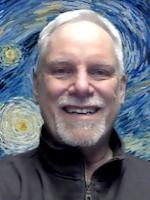

Future Teachers in US & Canada Collaborate to Explore SDGs in Their Communities |
Explore and create : Playground
This is presentation 1 of 3, at station "Global Collaboration Playground Station 4" within the playground "Global Collaboration PLN Playground: SDGs in Education"; scroll down to see more details.
Other presentations in this group:
| Audience: | Library media specialists, Teachers, Teacher education/higher ed faculty |
| Skill level: | Beginner |
| Attendee devices: | Devices required |
| Attendee device specification: | Smartphone: Android, iOS, Windows Laptop: Chromebook, Mac, PC Tablet: Android, iOS, Windows |
| Topic: | Global collaboration |
| Grade level: | Community college/university |
| Subject area: | Science, Social studies |
| ISTE Standards: | For Students: Digital Citizen
|
| Additional detail: | ISTE author presentation |
The purpose of this presentation is to share the experience of connecting future teachers in a 5-week collaborative SDG project and then share insight gained from the experience.
Attendees will be able to discuss:
-- The basics of organizing an international global collaboration
-- The structure of integrating two classes
-- The tools and strategies that can support
-- Lessons learned that can be applied in future projects
This 20-minute online presentation will be given using the interactive lecture format. I will present the project, the participants, and the process that we used. Throughout the presentation, I will use the Waterfall Chat format to have the attendees contribute their ideas and experiences as they pertain to the topic at hand. I will briefly use these comments to inform my presentation and provide them in printed format on my blog after the conference.
INTRODUCTION: (5 min)
Introduce the project:
-- North American Global Goals Project
Participants:
-- Undergraduate Teacher Education students at the University of Northern Iowa
-- Undergraduate Teacher Education students at the Red River College
Project Goals:
The overall goal of this experience was to engage in collaborative projects that address one or more of the Sustainable Development Goals.
Students goals included:
-- Explore Sustainable Development Goals and how they can be integrated into their classroom lessons
-- Engage in a global collaboration project to learn the process and strategies.
-- Reflect on how the lessons learned in this project can be integrated into their future classes.
PROJECT STRUCTURE (8 min.)
Will discuss the activities that were completed and how they were organized:
-- Explaining the format of the ongoing activities.
-- Identifying the weekly reflections for students and group leaders.
-- Organizing the Inter-Campus groups of 4 students.
-- Identifying the roles of the group members.
-- Acquainting students with necessary online tools.
-- Developing the online community to support this project.
Will share the schedule and the rationale behind its design.
Will discuss the forms of evaluation used:
-- How students planned to evaluate their students.
-- What was expected of our students and how their work was evaluated.
-- How personal reflections were used for formative/summative evaluation throughout the project.
LESSONS LEARNED (5 min)
As the professors reflected, they were able to identify what worked and how they might approach this differently in the future. Some of the ideas that will be covered include:
-- Careful planning between professors before the project begins.
-- Agree on the expected outcomes of the overall project.
-- Create common rubrics/expectations for actual projects so that the students will receive common feedback from all professors.
-- Begin with a well-described schedule/plan but be prepared to make modifications as necessary.
-- Receive constant feedback from the group leaders so that intergroup problems can be corrected in a timely fashion.
Bernadette, H. Ã., Wasserman, M., & Fisher, S. (2019). Building a Global Education Collaboration Model Using Experiential Learning: A Fresh Look at Developing Intercultural Competence. Journal of International Business Research and Marketing, 5(1), 7-12.
Caniglia, G., John, B., Bellina, L., Lang, D. J., Wiek, A., Cohmer, S., & Laubichler, M. D. (2018). The glocal curriculum: A model for transnational collaboration in higher education for sustainable development. Journal of Cleaner Production, 171, 368-376.
Lindsay, J. (2017). Connecting beyond the classroom-move from local to global learning modes. Scan: The Journal for Educators, 36(2), 27.
O’Connor, B., & Hite, R. (2017). Global Learning Using Biology PBL: A Texas-China Collaboration in Middle Grade Genetics. Teacher Leadership, 2(2), 17.

Dr. Leigh Zeitz is an ISTE Author, an Associate Professor, and Instructional Technology Coordinator at the University of Northern Iowa. He has been active in ISTE for over 30 years, is past President of the ISTE Global Collaboration PLN, and has been awarded the U.S. President's Volunteer Service Award through ISTE. In 2020, Dr. Z was awarded the 2020 ISTE Global Collaboration PLN Innovation award for his work on this project. Over his 44 years of teaching, he has developed an educational strategy that involves challenging and empowering learners by providing a learning environment that is teacher-guided and student-driven.
Boldly Go! Using Virtual Field Trips to Explore Your Curriculum
Destroy the Box Challenge: Classroom Challenges for Students to Empower and Engage
Implementing Digital Citizenship and Restorative Practices for Positive Behavior Intervention and Support